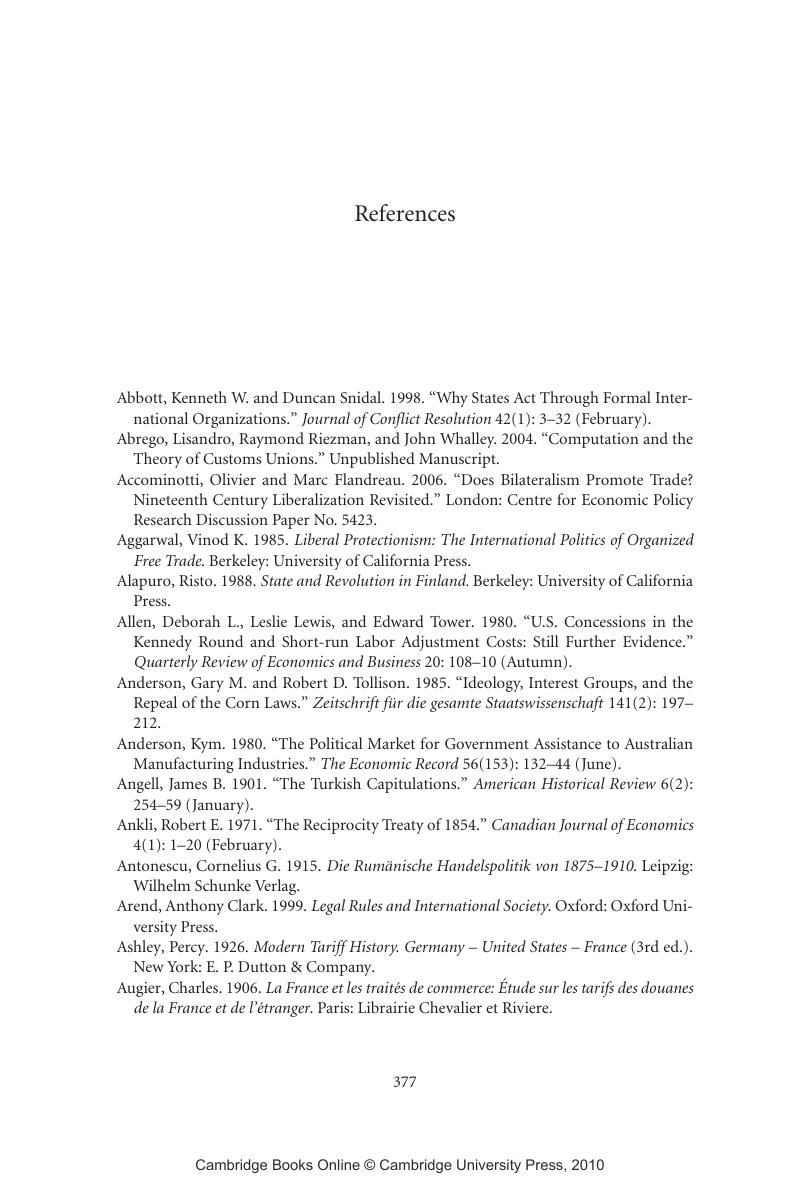Book contents
- Frontmatter
- Contents
- List of Figures
- List of Tables
- Preface
- POLITICS AND TRADE COOPERATION IN THE NINETEENTH CENTURY
- PART ONE COOPERATION AND VARIATION
- PART TWO DOMESTIC POLITICS AND TRADE POLICY
- PART THREE POLITICAL SUPPORT AND TRADE COOPERATION
- PART FOUR NORMS AND COOPERATION
- PART FIVE CONCLUSIONS
- References
- Index
- References
References
Published online by Cambridge University Press: 08 December 2009
- Frontmatter
- Contents
- List of Figures
- List of Tables
- Preface
- POLITICS AND TRADE COOPERATION IN THE NINETEENTH CENTURY
- PART ONE COOPERATION AND VARIATION
- PART TWO DOMESTIC POLITICS AND TRADE POLICY
- PART THREE POLITICAL SUPPORT AND TRADE COOPERATION
- PART FOUR NORMS AND COOPERATION
- PART FIVE CONCLUSIONS
- References
- Index
- References
Summary

- Type
- Chapter
- Information
- Politics and Trade Cooperation in the Nineteenth CenturyThe 'Agreeable Customs' of 1815–1914, pp. 377 - 406Publisher: Cambridge University PressPrint publication year: 2007



